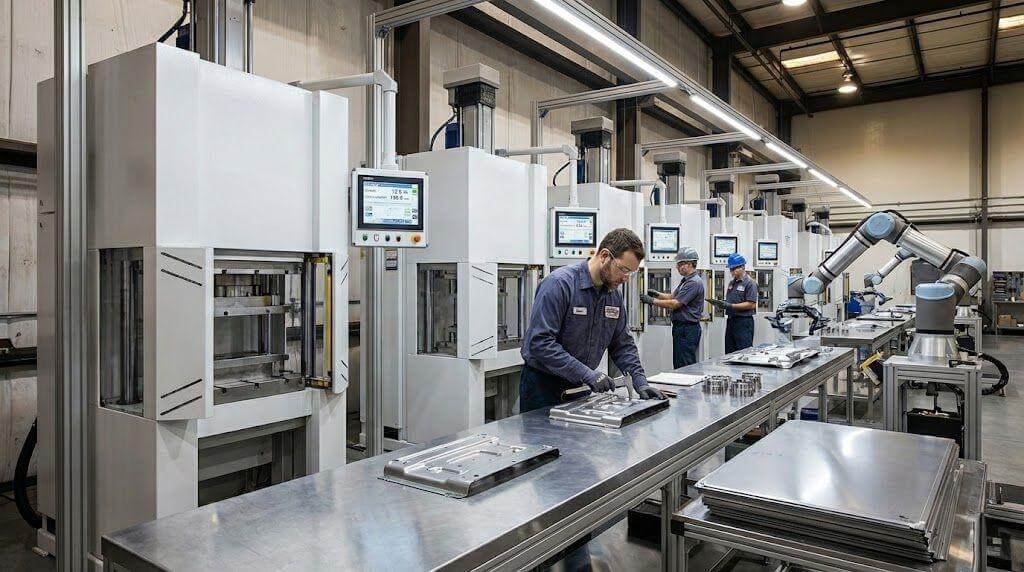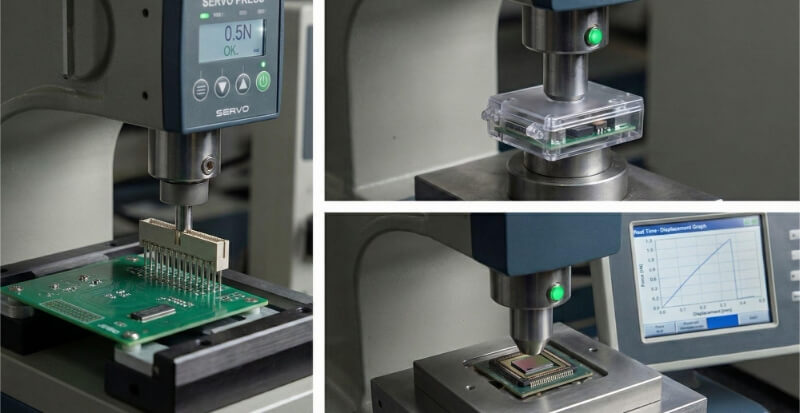Aluminum parts often need extra protection to last longer or perform better. Surface treatments can improve corrosion resistance, wear, or looks. Alodine and Anodize are two standard options. People often compare them because both are used on aluminum but serve different purposes. So, which is better for you? Let’s break it down in simple terms.
Alodine and Anodize are two popular treatments for aluminum surfaces. Both improve corrosion resistance but use different methods. Anodizing is an electrochemical process that builds a thick, rigid, and non-conductive oxide layer on the metal. Alodine is a chemical process that forms a thinner, conductive layer. It offers good protection but keeps the metal’s electrical conductivity.
Alodine and Anodize might sound similar, but they work differently. Let’s break down their processes, uses, and pros and cons so you can confidently pick the right one.
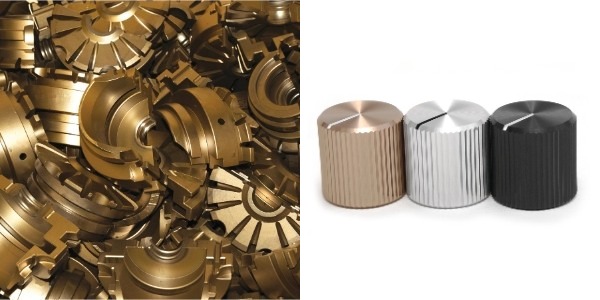
What Is Alodine?
Alodine, also called chromate conversion coating, is a chemical treatment for metal. During the process, a special chemical reacts with the metal’s surface to create a thin, protective layer.
This layer is skinny—just a few microns. It helps stop corrosion and also makes paint stick better. Since the coating doesn’t add any noticeable thickness, it’s great for parts that need tight size control.
The process is quick. First, the metal is cleaned. Then, the Alodine solution is applied. It only needs a few minutes to react with the surface. After that, the part is rinsed and dried. Depending on the type used, the final coating can look yellow, gold, or slightly shiny.
Types of Alodine (Chromate Conversion Coating)
There are different grades of Alodine, often grouped by color and use:
- Alodine 1000: Leaves a clear or slightly iridescent finish. It is often used where electrical conductivity is needed.
- Alodine 1200: Produces a golden yellow finish. It gives stronger corrosion protection.
- RoHS-compliant types: These avoid hexavalent chromium and are more eco-friendly. They are used when meeting environmental rules is required.
Common Materials Treated with Alodine
Alodine works best on:
- Aluminum
- Aluminum alloys
- Magnesium (less familiar but possible with modified formulas)
Advantages of Alodine
Alodine offers a fast and straightforward way to protect aluminum parts. It’s often chosen when speed, conductivity, and low cost matter most.
- Fast Processing: Alodine takes only a few minutes to apply. This helps speed up production.
- Low Cost: It’s one of aluminum and magnesium’s most affordable surface treatments.
- Thin Coating: The coating adds almost no thickness. This makes it great for tight-tolerance parts.
- Good Paint Base: Alodine improves paint adhesion. It helps coatings stick better and last longer.
- Electrical Conductivity: Unlike anodizing, Alodine coatings remain conductive. This is useful in electronic or grounding applications.
- Meets Military Specs: Common Alodine types are qualified for aerospace and defense use.
Disadvantages of Alodine
Alodine has limits, especially when it comes to strength and long-term durability.
- Lower Durability: Alodine does not improve surface hardness. It doesn’t protect well against wear or abrasion.
- Limited Corrosion Resistance: While it helps, the protection is not as strong as anodizing. It’s not ideal for harsh environments.
- Minimal Aesthetic Appeal: The finish is plain and dull. It’s not suited for parts where appearance matters.
- Contains Hexavalent Chromium: Some Alodine types include toxic chemicals, which raise health and environmental concerns unless properly managed.
- Not Suitable for All Alloys: Some aluminum or magnesium alloys may not react evenly, leading to patchy coatings.
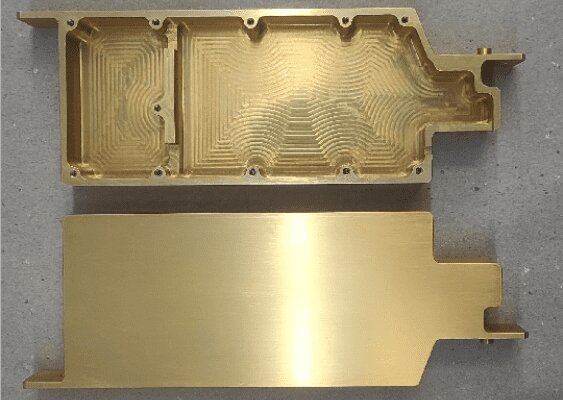
What Is Anodizing?
Anodizing is an electrochemical process that converts the outer surface of aluminum into a thick oxide layer. This oxide isn’t applied—it grows out of the metal itself, making it very hard and long-lasting.
The process starts by placing the aluminum part in an acid bath. An electric current is applied. The part acts as the anode, where “anodizing” comes from. Oxygen reacts with the surface, forming an aluminum oxide layer.
This oxide layer is porous at first. Dyes can be added to create colored finishes. Then the surface is sealed, locking in the color and closing the pores. The result is a hard, non-conductive finish that protects the metal underneath.
Types of Anodizing
There are three main types of anodizing:
- Type I (Chromic Acid Anodizing) creates a thin, soft coating. It is often used in aerospace, but it is not as common today because of environmental concerns.
- Type II (Sulfuric Acid Anodizing): The most widely used type. It gives a decorative finish and can be dyed in many colors.
- Type III (Hardcoat Anodizing) builds a much thicker and tougher coating. It is ideal for parts that need high wear resistance or extra protection.
Materials That Can Be Anodized
Anodizing works best on:
- Pure aluminum
- Aluminum alloys (especially the 6xxx and 7xxx series)
- Titanium, magnesium, and zinc can be anodized too, but the processes are different.
Advantages of Anodize
Anodizing offers strong, long-lasting protection and a clean, professional finish. It’s often used when durability and appearance are both important.
- High Wear Resistance: The hard oxide layer protects the surface from scratches and abrasion.
- Strong Corrosion Protection: Anodized parts last longer in wet, salty, or chemical environments.
- Color Options: The porous surface can absorb dyes. This allows for a wide range of decorative finishes.
- Improved Surface Insulation: The coating is non-conductive. This is useful in electrical and thermal applications.
- Long-Lasting Finish: The coating becomes part of the metal. It won’t peel or flake over time.
- Environmentally Safer Options: Unlike some Alodine products, many anodizing processes are free from toxic heavy metals.
Disadvantages of Anodize
While anodizing has many benefits, it has a few trade-offs.
- Higher Cost: Anodizing requires more equipment, time, and energy. This raises the price compared to simpler treatments like Alodine.
- No Electrical Conductivity: The oxide layer is non-conductive, making it unsuitable for parts that need grounding or signal flow.
- More Complex Process: It needs controlled conditions, like voltage and temperature. This adds steps and can slow down production.
- Thickness May Affect Tolerances: The added oxide layer can change dimensions. Careful planning is needed for tight-tolerance parts.
- Color Variation Risk: Dyeing can lead to color differences between batches or surfaces with varying alloy content.
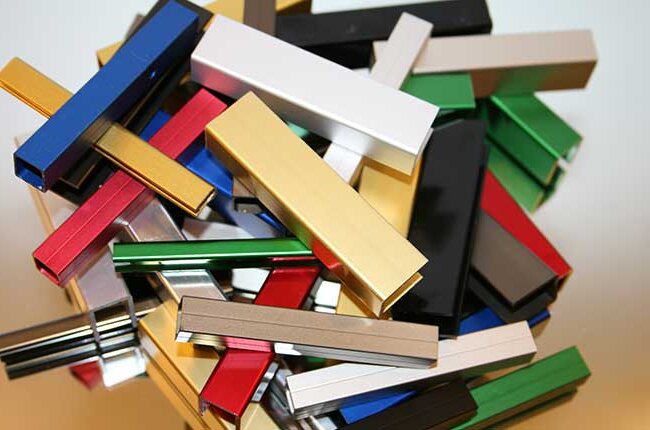
Key Differences Between Alodine and Anodize
Both alodine and anodize improve the surface of aluminum, but they do so in very different ways. Here’s how they compare across key factors.
Process Methodology
Alodine is a chemical coating that reacts with the surface of metal. There is no electricity involved. The part is dipped or sprayed, then rinsed and dried. It’s quick and doesn’t require complex equipment.
Anodizing is an electrochemical process that uses electricity and an acid bath to build up an oxide layer on the metal itself. The setup is more involved, and the process takes more time. It also requires sealing and sometimes dyeing.
Thickness and Durability Comparison
Alodine produces a very thin coating—usually less than 1 micron. It does not add strength or wear resistance. Its main functions are corrosion protection and paint adhesion.
Anodizing creates a much thicker layer. Type II anodizing can reach 25 microns. Type III (hard anodize) can go even thicker. This oxide layer is hard, wear-resistant, and insulating. It adds durability without using extra materials.
Impact on Corrosion Resistance
Alodine provides basic corrosion protection. It’s often used when parts will be stored indoors or painted later. It protects against oxidation and improves lifespan but doesn’t handle harsh conditions well.
Anodizing offers stronger corrosion resistance, especially Type III. The thick oxide layer seals the surface against water, chemicals, and salt, making it ideal for parts exposed to outdoor or aggressive environments.
Aesthetic and Color Options
Alodine coatings are primarily functional. They come in limited colors, like clear, gold, or iridescent yellow. The finish is dull and not meant for appearance. It’s best when the part will be painted or hidden.
Anodizing offers many color choices. Because the oxide layer is porous before sealing, it can absorb dyes. You can get finishes in black, red, blue, green, or custom colors. Depending on the prep, anodizing also gives a smooth, matte, or glossy look.
Cost
Alodine is less expensive. The process is simple, fast, and uses fewer resources, making it a cost-effective way to add basic protection or prepare for painting.
Anodizing costs more. It needs more setup, chemicals, and time. Hard anodizing, in particular, adds cost due to its strict process controls. However, it may save money in the long run if the part needs higher wear resistance.
Applications
Alodine is used in aerospace, defense, and electronics. It’s chosen when conductivity, lightweight coating, and paint prep are key. You’ll see it on brackets, panels, and aircraft parts.
Anodizing is used for consumer goods, automotive parts, machinery, and medical tools. It’s chosen when durability, wear resistance, and appearance matter. Think camera bodies, bike parts, and handles that see regular contact.
Alodine vs Anodize: Choosing the Right Treatment
Choosing between Alodine and Anodize depends on your part’s needs. Each treatment has its strengths. The right pick comes down to function, cost, and where the part will be used.
When to Choose Alodine?
Pick Alodine if:
- The part must stay conductive (like grounding parts or EMI shields)
- You need a fast, low-cost coating
- The part will be painted later
- The part isn’t exposed to heavy wear or outdoor weather
- You’re working with aerospace or defense standards (MIL-DTL-5541)
Alodine works well when you want basic corrosion protection without changing the part’s surface or dimensions.
When to Choose Anodize?
Go with Anodizing if:
- You need high wear resistance
- The part will be exposed to the elements
- The finish must be rugged and long-lasting
- You want a colored surface for branding or looks
- Electrical insulation is needed (like in consumer electronics or heat sinks)
Anodizing is better for parts that face rough conditions or need protection and a clean, finished appearance.
Conclusion
Alodine and anodizing both protect aluminum, but they serve different goals. Alodine is a thin chemical coating that provides corrosion resistance and keeps electrical conductivity. It’s fast, low-cost, and often used as a prep for paint. Anodizing builds a thicker, harder oxide layer, offering better wear resistance and more color options. It’s stronger but also more complex and expensive.
Need help choosing the proper surface treatment for your parts? We’re here to support your project with expert advice and fast production. Contact us today to get a quote or discuss your design needs.
Hey, I'm Kevin Lee

For the past 10 years, I’ve been immersed in various forms of sheet metal fabrication, sharing cool insights here from my experiences across diverse workshops.
Get in touch

Kevin Lee
I have over ten years of professional experience in sheet metal fabrication, specializing in laser cutting, bending, welding, and surface treatment techniques. As the Technical Director at Shengen, I am committed to solving complex manufacturing challenges and driving innovation and quality in each project.

